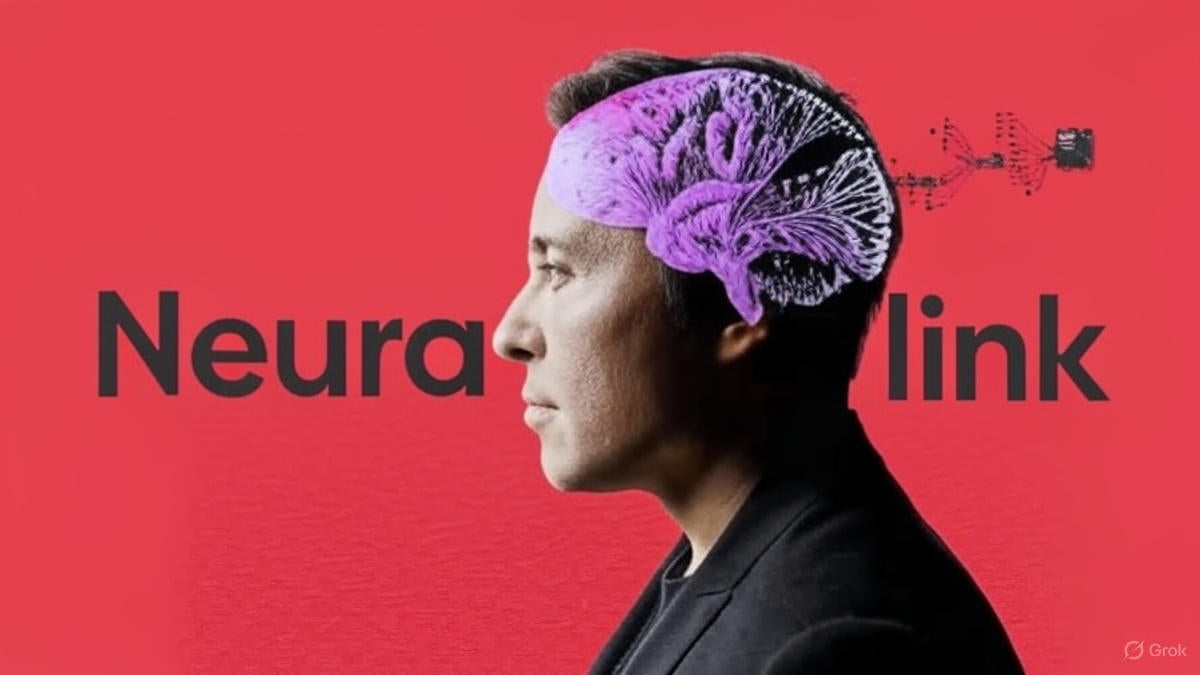Neuralink [7 Insights] on Blindsight Brain Implant Breakthrough
Introduction
On September 27, 2025, the X user @cb_doge shared an update that has taken the tech and medical communities by storm. The post focuses on Neuralink's "Blindsight" brain implant, a revolutionary technology designed to restore vision for individuals born blind. Featuring both a text description and a compelling image, this post highlights the potential of Neuralink to transform medical treatment for millions globally.
1. Full Details of the X Post
- Post ID: 1971840232870793312
- Username: @cb_doge
- Timestamp: 07:32 UTC (12:02 PM IST), September 27, 2025
- Text Content: "Neuralink is working on Blindsight, a brain implant that could restore vision in people born blind. Tests in monkeys already show success. Think about it. for humanity, this could be one of the most profound breakthroughs of our time. "
- Image Description: The image depicts a collaborative medical setting. A person in a gray "SpaceX" T-shirt, likely Elon Musk, discusses with professionals in surgical scrubs. A doctor in a white lab coat observes thoughtfully, hinting at Neuralink’s ongoing trials or clinical evaluations.
Neuralink is working on Blindsight, a brain implant that could restore vision in people born blind. Tests in monkeys already show success.
— DogeDesigner (@cb_doge) September 27, 2025
Think about it. for humanity, this could be one of the most profound breakthroughs of our time. pic.twitter.com/H6hRvbQSHU
2. What is the Blindsight Implant?
The Blindsight implant is a brain-computer interface targeting the visual cortex, bypassing damaged eyes or optic nerves. Its goal is to restore partial or full vision to people born blind or those with severe vision loss. Successful monkey trials indicate that the technology has moved beyond theory, demonstrating the brain’s ability to interpret visual signals via cortical stimulation.
3. Significance of Neuralink’s Progress
- FDA Breakthrough Designation: The implant received accelerated approval pathways, speeding up potential human trials.
- Human Impact: Around 36 million people worldwide suffer from total blindness, highlighting the implant's transformative potential.
- Technological Innovation: This represents one of the most advanced integrations of neural engineering and medical technology.
4. Public Reactions and Implications
The X post generated diverse reactions:
- Excitement & Hope: Users like @NastiaVox and @WillarShoko celebrate the potential to restore vision.
- Technical Concerns: @JJCrome highlights the challenge of training the visual cortex to interpret new signals.
- Ethical Questions: @MrYellow1899 raised points about the implications of altering human cognition through implants.
This conversation underscores the broader societal and ethical discourse surrounding Neuralink’s work.
5. Clinical and Research Context
The accompanying image suggests the hands-on involvement of Elon Musk, overseeing or participating in research discussions. Surgical staff in the image imply preparations for human trials, expected to begin in early 2026. The trials will evaluate safety, precision, and efficacy in real-world conditions.
6. Why This Matters for Humanity
- Cognitive Enhancement: Potential future applications may include memory improvement, communication aids, and AI-human interfacing.
- Healthcare Revolution: Blindsight exemplifies the merging of neuroscience with clinical solutions, offering hope to patients with previously untreatable conditions.
7. Future Outlook
With successful monkey trials, FDA designation, and active public engagement, Neuralink is poised to lead a new era of neurotechnology. While challenges remain—ethical, technical, and practical—the progress signals a major scientific milestone that could redefine human health and capability.
FAQs
- What is the Blindsight implant?
- It’s a brain implant developed by Neuralink to restore vision by stimulating the visual cortex directly.
- Who can benefit from this technology?
- Individuals born blind or those with severe vision loss due to optic nerve damage or eye diseases.
- When will human trials begin?
- Human trials are expected to start in early 2026, following successful preclinical trials in monkeys.
- Why is this a breakthrough?
- It bypasses damaged visual systems entirely, offering a new approach where conventional therapies fail.
- Are there ethical concerns?
- Yes. Altering brain activity raises ethical and societal considerations, including long-term effects and accessibility.
Conclusion
The X post by @cb_doge provides a glimpse into the future of medical technology. Neuralink’s Blindsight implant is not just a scientific experiment—it represents a potential paradigm shift in how humanity can overcome sensory limitations. The combination of rigorous clinical research, innovative neural engineering, and active public engagement makes this one of the most intellectually significant developments of our time.
As this technology progresses, it will challenge our perceptions of human potential, ethics in neuroscience, and the role of AI-assisted medical innovations. Observers, researchers, and patients alike should follow these developments closely, as they could redefine the boundaries of human experience for generations to come.


0 comments